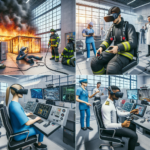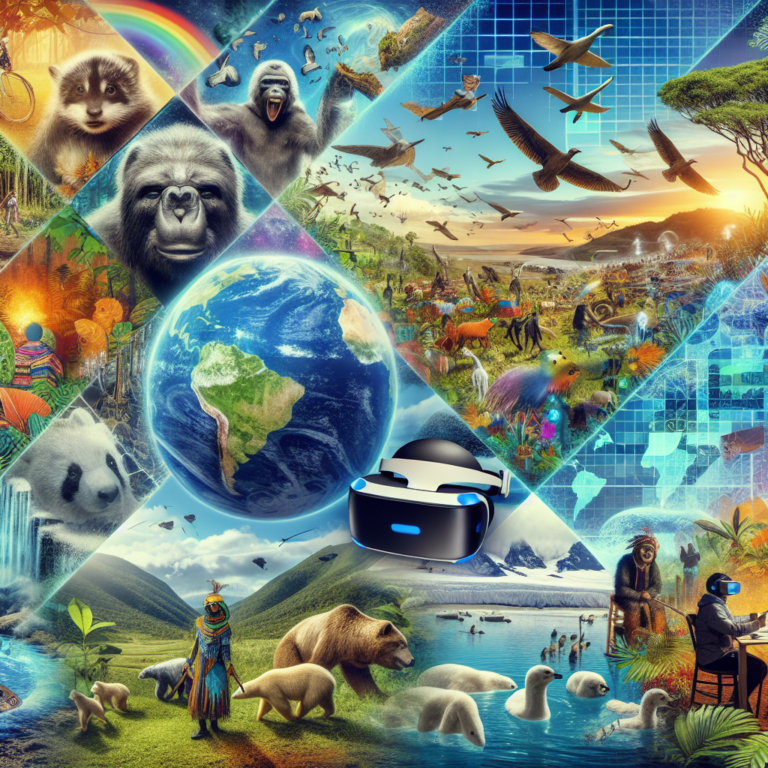Transforming Conservation: The Impact of Immersive Technologies on Environmental Awareness 🌍
Introduction: Bridging the Gap Between Nature and Technology
As we advance into the digital age, one of the most promising intersections of technology and social good is found in the realm of immersive technologies. Virtual reality (VR), augmented reality (AR), and mixed reality (MR) are redefining how we perceive and interact with our environment. These innovative tools are not only revolutionizing entertainment but also paving the way for remarkable advancements in environmental conservation and awareness.
What Are Immersive Technologies?
Immersive technologies encompass a variety of digital experiences that enhance or simulate reality. Here’s a snapshot of the main players:
- Virtual Reality (VR): A fully immersive experience that transports users to a different world through headsets.
- Augmented Reality (AR): Enhances the real world by overlaying digital information using smartphones or smart glasses.
- Mixed Reality (MR): Combines both VR and AR elements, allowing real and virtual elements to interact in real time.
How Immersive Technologies Foster Environmental Awareness
1. Bringing Nature to Everyone: Virtual Field Trips 🌳
Immersive technologies have made it possible to transcend geographical barriers. Schools and educational institutions are increasingly adopting VR field trips to provide students with first-hand experiences of ecosystems. Picture students exploring the Amazon rainforest or diving into the Great Barrier Reef without leaving their classrooms! This not only fosters a deeper appreciation for these habitats but also encourages them to care about their preservation.
2. Interactive Learning Experiences
Through AR and VR applications, users can engage in interactive learning experiences that highlight critical environmental issues. Imagine using your smartphone to view an endangered species in real-time, learning about its habitat, and understanding its struggles.
- Gamification: Interactive games that enable players to tackle environmental challenges can lead to a more profound understanding of sustainability and conservation efforts.
- Real-time Data Visualization: Utilizing AR technology, individuals can visualize the impact of pollution or climate change in their own neighborhoods, making the challenges feel more personal and immediate.
3. Empathy Through Immersive Storytelling 📖
Immersive storytelling through these technologies evokes powerful emotional responses that traditional mediums often struggle to achieve. Documentaries using VR can take viewers on journeys to landscapes ravaged by deforestation or pollution. This form of storytelling:
- Can create emotional connections between viewers and environmental issues.
- Encourages actionable change by instilling a sense of urgency.
Case Studies of Immersive Technology in Action
1. Experience the Arctic with Virtual Reality ❄️
Organizations like National Geographic have launched VR experiences that simulate life in the Arctic Circle. Participants can witness icebergs melting and polar bears in their natural habitat, reinforcing the critical message about climate change. Such immersive experiences are invaluable in igniting passion for environmental stewardship.
2. Eco-guardians Through Gaming 🎮
Games like “Eco” encourage players to build civilizations while considering sustainable practices. Players must manage resources wisely and witness the long-term effects of their actions, making them acutely aware of real-life environmental issues.
The Future of Conservation: Potential and Challenges
1. Harnessing Data for Change
As technology continues to evolve, integrating big data analytics with immersive technologies could create more effective conservation strategies. By gathering real-time environmental data, conservationists can simulate outcomes and test various strategies in virtual environments before implementation.
2. Overcoming Barriers to Adoption
Despite the immense potential of immersive technologies, challenges remain. Access to technology and internet connectivity can limit outreach, especially in remote areas. Continuous efforts are needed to bridge this digital divide, ensuring that all communities can benefit from these advancements.
Empowering Local Communities Through Immersive Technologies
1. Engaging Indigenous Perspectives 🌿
Immersive technologies allow indigenous communities to share their stories and engage others in their conservation efforts. By showcasing local knowledge and traditions through AR storytelling, broader audiences can appreciate the importance of preserving not only natural environments but also cultural heritage.
2. Mobilizing Grassroots Movements
The accessibility of AR applications empowers local activists to create awareness about regional environmental concerns. Tools that allow users to map pollution sources or document wildlife sightings can foster grassroots collaboration, creating a network of committed conservationists.
Conclusion: A New Era for Environmental Conservation Awaits
In an era where climate-related challenges are growing more urgent by the day, the integration of immersive technologies in environmental conservation efforts holds immense promise. By tapping into the emotional and educational potential of VR, AR, and MR, we can foster a generation that is not only aware of environmental issues but also actively engaged in addressing them. As we look towards the future, embracing these cutting-edge tools may be pivotal in our quest to protect our planet.




0 Comments